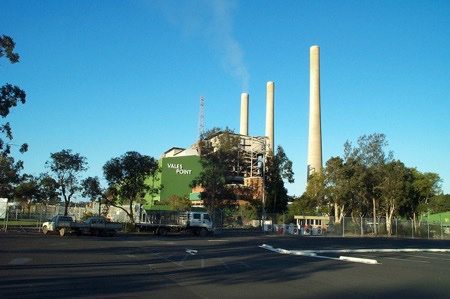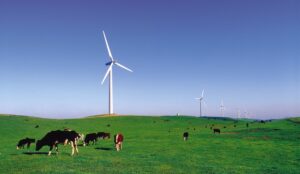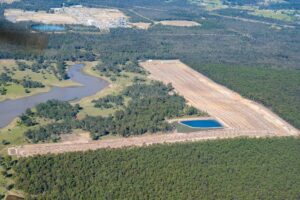Last week, a parable of Australia’s energy policy chaos came to light. Not in the bawdy policy debate in Canberra, but in the quietly filed financial reports of a power station owner.
This is the story of the shifting fortunes of Vales Point, an old polluting coal-fired power station. In 2015, its then owner, the NSW state government decided it would close early. So it was devalued by $370 million and sold to private hands for $1 million dollars.
Now, less than 2 years on the buyers have decided to keep the station open for far longer, and have already pocketed $40 million. While consumers and the climate lose from delaying the inevitable phase-out of coal-fired power generation, there are winners along the way too.
The 1,320MW coal-fired Vales Point power station is located on the Central Coast of New South Wales. It is one of the state’s five coal power stations. In 2015/16 it was responsible for 11.4% of the large-scale electricity generation in the state, producing 6.85 million tonnes of CO2 in the process.(1)
The facility was commissioned in 1978 and for most of its life was state-owned.(2) In December 2015, as part of the Liberal government’s power privatisation, it was sold to Sunset Power International Pty Ltd for $1million. (3) Sunset is owned 50:50 by companies associated with Trevor St Baker and Brian Flannery: veterans of the Australian energy industry.
Interestingly, Trevor St Baker also controls over 25% of ASX listed ERM Power Limited. Sunset Power has a contract to supply electricity from Vales Point to ERM. In turn, ERM has contracts to supply the whole NSW government with electricity.(4)
Earlier in 2015, while still in state hands- but potentially after it had been put up for sale – the Vale Point station’s useful life was assessed. The conclusion of this exercise was a decision to close the power station seven years before the end of its technical life: in 2021/22 rather than 2028/29.
As a result, it was devalued by $371,163,000: essentially writing off almost all of its value. It was on this basis that it was sold: as a near worthless legacy asset supplying power into a saturated electricity market, unable to compete with either cheaper brown coal- generated electricity from Victoria or the growing supply from renewables. (5)
Now, less than two years later, the picture could not look more different.
Sunset Power International’s 2017 financial report was released last week. It reveals that:
- In 2017, it sold over $380 million of electricity from Vales Point. By comparison, in its last full year of state ownership Vales Point generated electricity sold for $270 million.
- In April 2017, the shareholders pocketed $39,900,000 for the buy-back of 14 $1 shares ($2,850,000 per share), nice work if you can get it.
- Sunset Power has decided to operate Vales point until at least 2029. As a result of this decision, plus increased electricity prices and a different accounting method, Sunset Power has increased its valuation of the power station assets by over $650 million to $720 million.
So what the NSW government considered a near-worthless asset a couple of years ago is now anything but, and its owners have already made back 40 times their original investment of $1 million.
This is a stark example of the consequences of Australia’s broken energy policies. Years of chaos has led to a chronic lack of long-term planning and delayed investment in new renewable capacity.
As a result, supply tightened so much in the wake of Hazelwood’s closure that windfall profits have been delivered to highly polluting coal power stations. Of course, Australia’s self-sabotaging approach to gas exports hasn’t helped either.
And an under-utilized coal power plant, recently slated for early closure, will now operate until the end of the next decade. Indeed, its owner plans to run it for even longer.
This reversal of fortunes appears to be a consequence of the uncertainty resulting from Tony Abbott’s regular application of a wrecking ball to climate/energy policy for the best part of a decade.
It also raises serious doubts about whether the NSW Government’s management of the privatization of Vales Point was really as good for tax payers as then-Treasurer Gladys Berejiklian claimed.
1 Clean Energy Regulator (2017) Electricity sector emissions and generation data 2015-16, 19 April 2017, http://www.cleanenergyregulator.gov.au/NGER/National%20greenhouse%20and%20energy%20reporting%20data/electricity- sector-emissions-and-generation-data/electricity-sector-emissions-and-generation-data-2015-16, Energy & Resource Insights Analysis
2 Technically , the current power station is Vales Point B. V ales Point A began operations in the 1960’ s and has been decommissioned.
3 The sale process had begun in March 2015 and, the buyer announced in November and the sale finalised on 17 December that year. https://www.treasury.nsw.gov.au/sites/default/files/mediarelease/20151119–media-Berejiklian—Gentrader-deal- cleaned-up– Vales-Point-and-Cobbora.pdf
4 Contracts 777 and 776 for large and small sites respectively. http://www.procurepoint.nsw.gov.au/contracts/c777, http://www.procurepoint.nsw.gov.au/contracts/c776-0 Use of these whole-of-government contracts is mandated for departments, executive and separate agencies, advisory entities and statutory bodies/authorities.
5 Potter, B and Winestock, G (2015) NSW lost $565m on dud Vales Point power plant, 20 November 2015, Australian Financial Review, http://www.afr.com/business/energy/vales-point-owner-pumps-565m-red-ink-ahead-of-sale-20151120- gl3ocf








